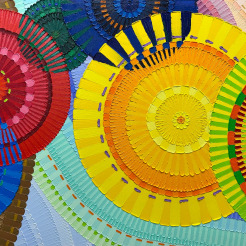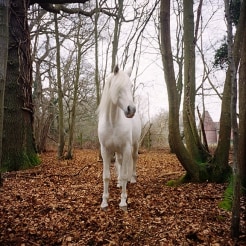Born in 1949 in Los Angeles, Richard Misrach studied Psychology at the University of California, Berkeley. His time on campus was formative, and he began observing and photographing the politically-charged anti-war riots. His first major project depicted the homeless of Berkeley’s Telegraph Avenue, and after showing this suite of photographs at the International Center of Photography, Misrach published them in an award-winning book entitled Telegraph 3 AM. He became frustrated at the lack of political impact his work had, and thus turned to the deserts of the American Southwest for inspiration in the late seventies. His travels would also take him to Stonehenge, Greece, Louisiana, and Hawaii. His most renowned project, the Desert Cantos series, which he begun in 1979 and continues to develop today, features arid landscapes that are both sublime and disquieting. Featuring both natural and manmade objects and occurrences, these works juxtapose the serenity of vast wide-open landscapes with evidence of human interruption, exposing, as Misrach states, “the problematic relationship between man and the environment.” Misrach’s projects have also depicted the 1991 Oakland-Berkeley fire, the aftermath of Hurricane Katrina, the Golden Gate Bridge, chemical plants and refineries in the American South, and the zone around the U.S.-Mexico border. Misrach’s work is held in numerous prestigious public collections and he has been hailed by David Littlejohn of the Wall Street Journal as “the most interesting and original American photographer of his generation.” Misrach describes his work as a navigation between the extremes of the political and the aesthetic.


